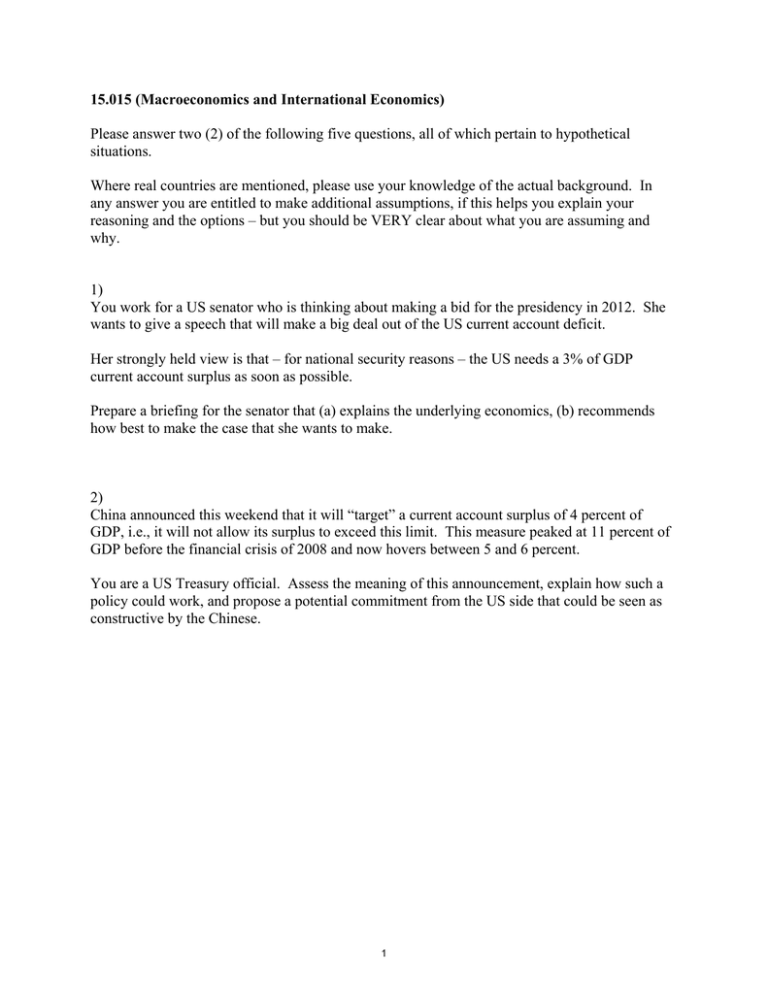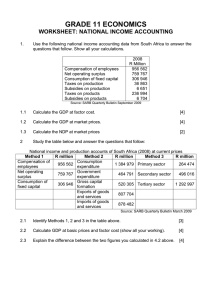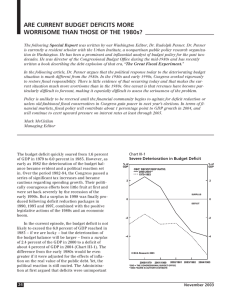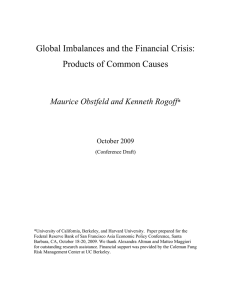Document 13447842
advertisement

15.015 (Macroeconomics and International Economics) Please answer two (2) of the following five questions, all of which pertain to hypothetical situations. Where real countries are mentioned, please use your knowledge of the actual background. In any answer you are entitled to make additional assumptions, if this helps you explain your reasoning and the options – but you should be VERY clear about what you are assuming and why. 1) You work for a US senator who is thinking about making a bid for the presidency in 2012. She wants to give a speech that will make a big deal out of the US current account deficit. Her strongly held view is that – for national security reasons – the US needs a 3% of GDP current account surplus as soon as possible. Prepare a briefing for the senator that (a) explains the underlying economics, (b) recommends how best to make the case that she wants to make. 2) China announced this weekend that it will “target” a current account surplus of 4 percent of GDP, i.e., it will not allow its surplus to exceed this limit. This measure peaked at 11 percent of GDP before the financial crisis of 2008 and now hovers between 5 and 6 percent. You are a US Treasury official. Assess the meaning of this announcement, explain how such a policy could work, and propose a potential commitment from the US side that could be seen as constructive by the Chinese. 1 3) You are in a public panel discussion with the finance minister of Estonia. Estonia was running a large current account deficit and had a balanced government budget up until the financial crisis of 2008. Its currency remains fixed relative to the euro. The minister insists that "fiscal consolidation" (meaning cutting the budget deficit) by 9 percent of GDP is working for his country and also that all other countries in Europe should do the same. You represent the European Union on this panel. How do you respond to the minister? (In your answer, lay out your assessment and reasoning with regard to all parts of his statement – as well as emphasizing what you would actually say.) 4) Greece has government debt over 100 percent of GDP, much of which is owed to foreigners. It also has a big current account deficit and the economy is in recession. It received an IMF program in spring 2010. Iceland, which is not a member of the eurozone, has a similar debt-to-GDP ratio – much of which is also owed to foreigners. It faced severe financial collapse when its banks failed in fall 2008 but has done much better since receiving financial assistance from the IMF. What is the right way to think about the differences and similarities between Greece and Iceland? Review the policy options for Greece and Iceland. Under what circumstances should they consider defaulting on some of their government debt? 5) According to the constitution in the country of Utopia, the exchange rate cannot deviate from 20 utops (the local currency) to the dollar. This rate has held for 40 years. Now, however, the country faces a severe crisis – both foreigners and local residents are moving as much as possible out of utops into dollars. Foreign exchange reserves are down to $30 billion and are expected to last only another week, while there is a large current account deficit (5% of GDP), a big budget deficit (also 5% of GDP), and high inflation (10% per annum and rising). What are the options for the government and what do you recommend? 2 MIT OpenCourseWare http://ocw.mit.edu 15.015 Macro and International Economics Fall 2011 For information about citing these materials or our Terms of Use, visit: http://ocw.mit.edu/terms. 3











